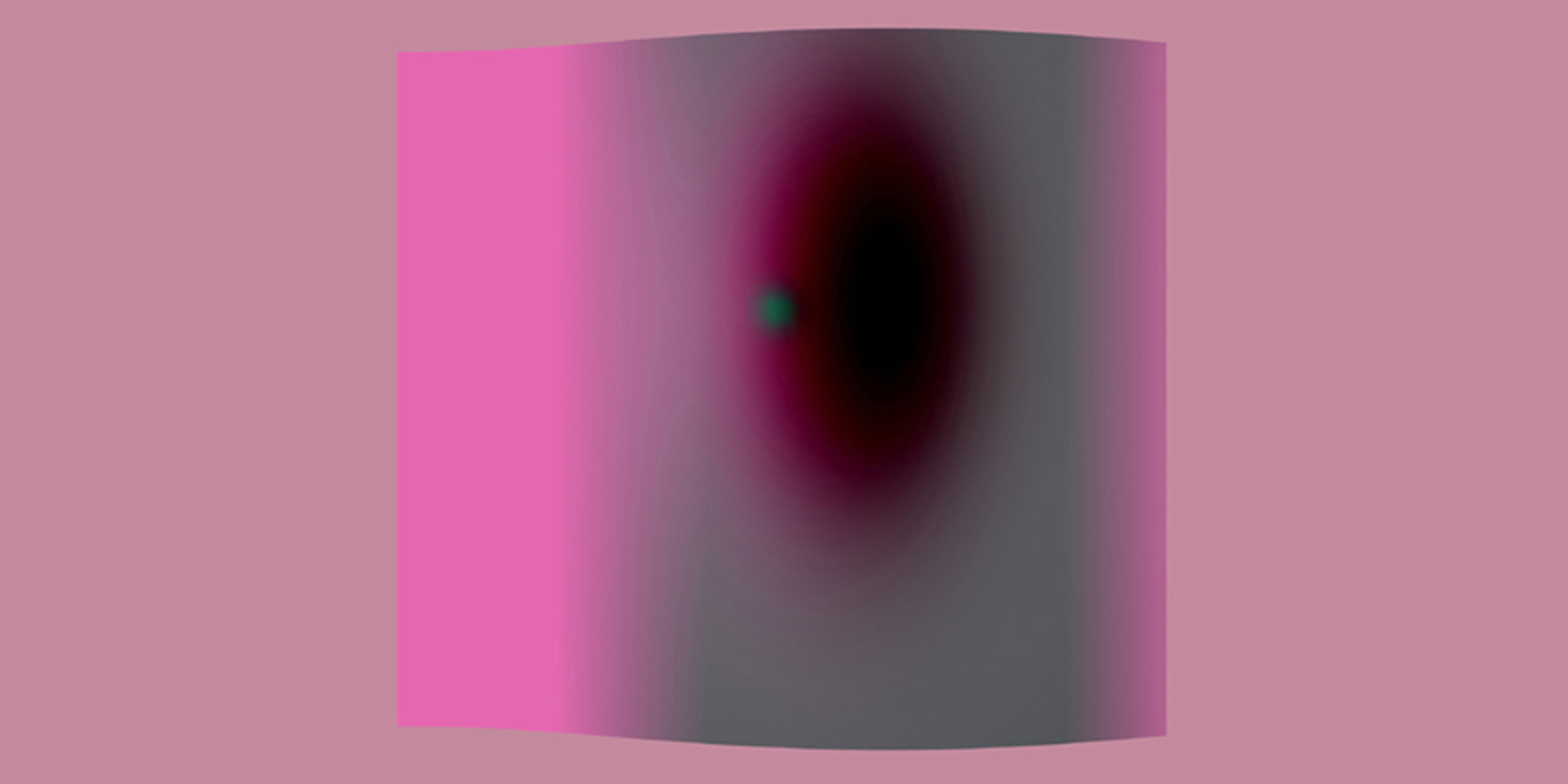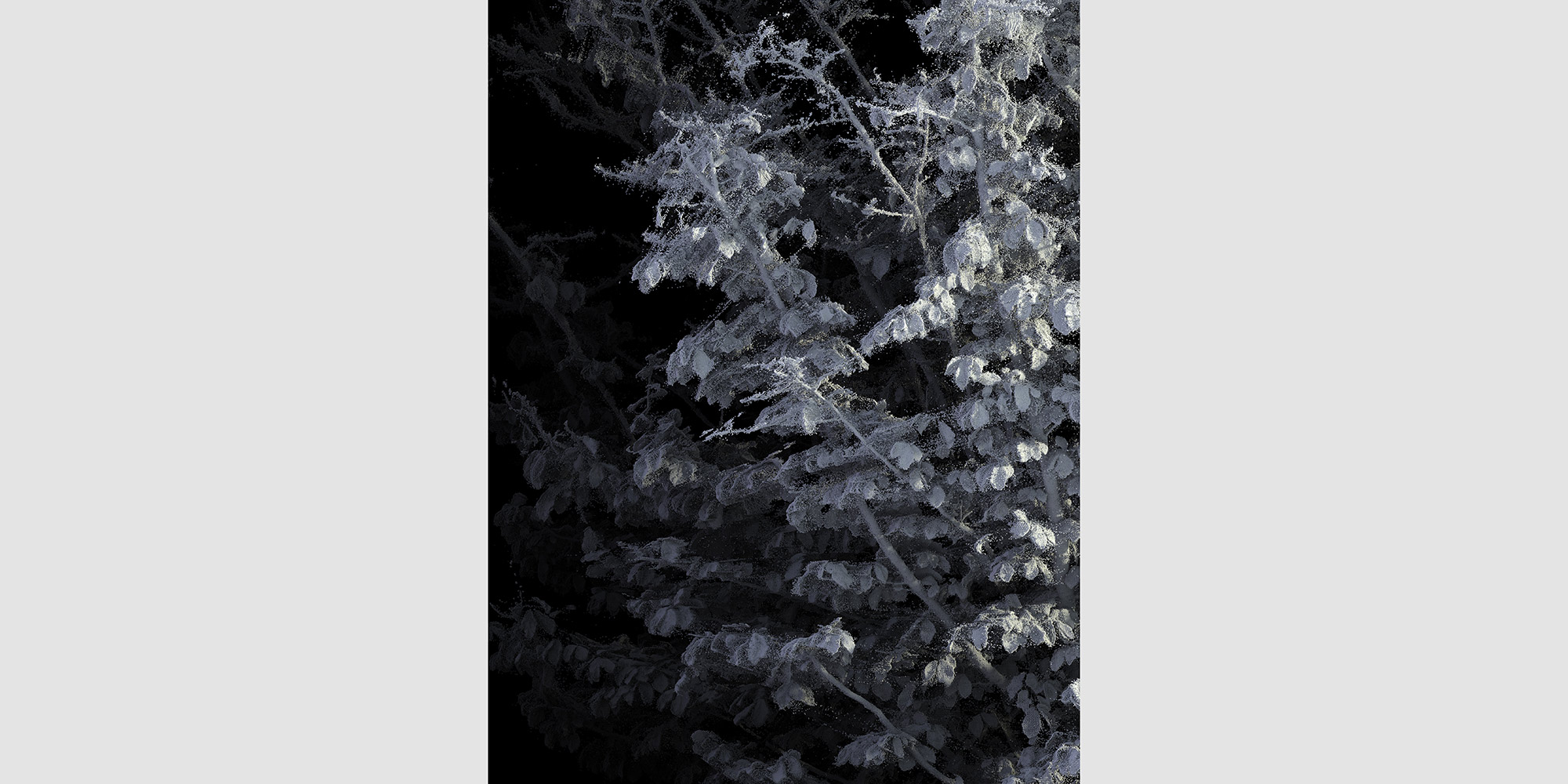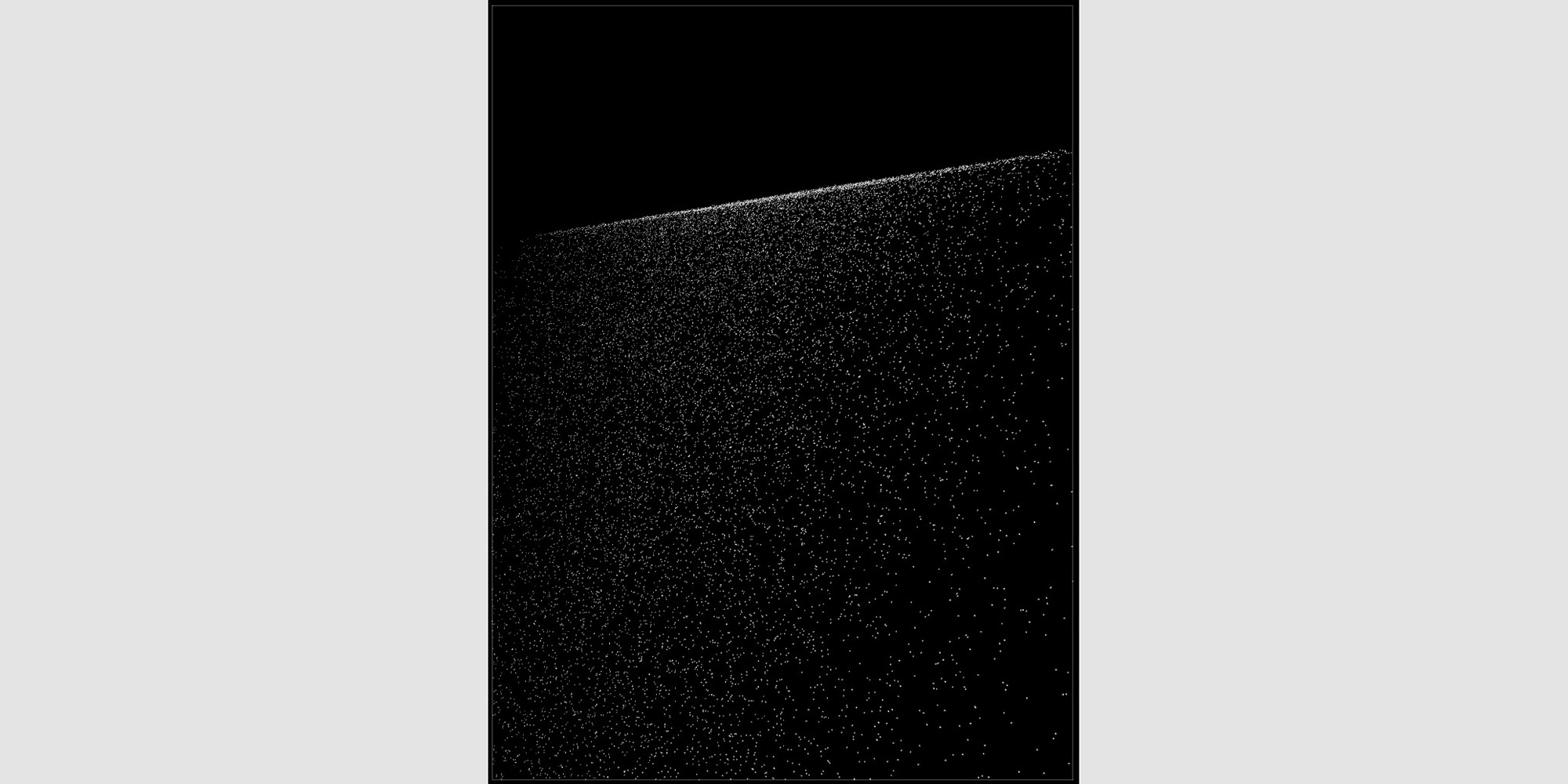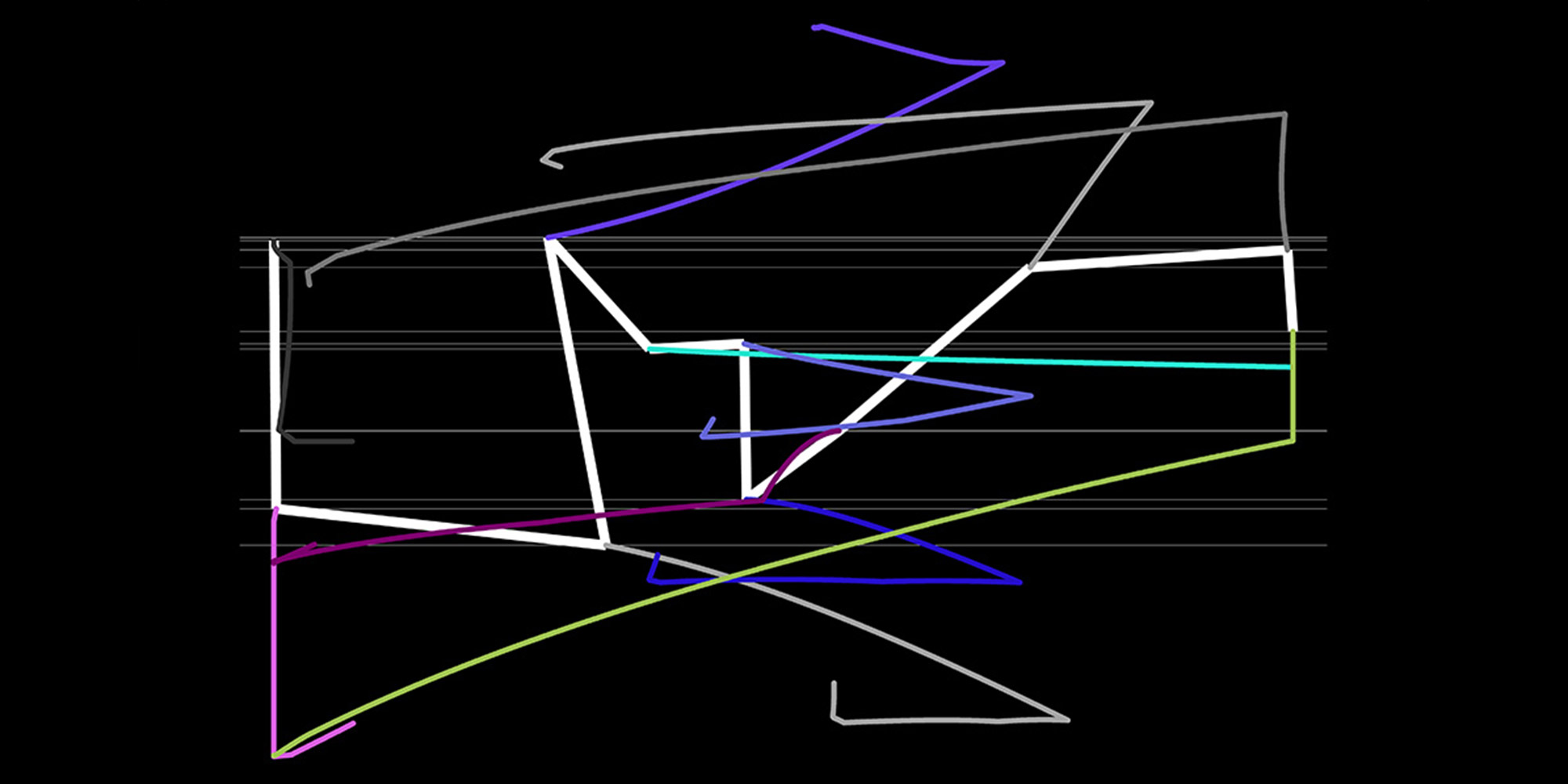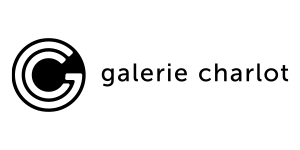The Paris and Tel Aviv-based Galerie Charlot celebrates its tenth year with an anniversary exhibition in Paris. The curated show features currently represented artists, showing a diversity of approaches to media over several generations.
Exhibiting artists include Anne-Sarah Le Meur, Antoine Schmitt, Dominique Pétrin, Eduardo Kac, Eric Vernhes, Flavien Théry, Laurent Mignonneau & Christa Sommerer, Manfred Mohr, Nicolas Sassoon, Nikolas Chasser Skilbeck, Quayola, Sabrina Ratté, Thomas Israel and Zaven Paré.
Galerie Charlot: 10 Year Anniversary Exhibition
Since 2010, Galerie Charlot has been developing its program on the relationship between art, technology and science; showing established, mid-career, and emerging artists spanning a range of media from the traditional to the experimental. This 10th anniversary comes at a moment when media art is gathering renewed attention thanks to recent landmark exhibitions such as Electronic Superhighway at the Whitechapel Gallery (2016), Artists & Robots at the Grand Palais (2018) and Programmed: Rules, Codes and Choreographies in Art at the Whitney Museum (2019).
While the earliest works in the show, like Manfred Mohr’s algorithmic drawings, date as far back as the 1970s, works by emerging artists–including Quayola, Sabrina Ratté, Flavien Théry–showcase how a new generation of artists is engaging with contemporary technology. In their respective practices, these artists use 3D software, computer-generated animation, three-dimensional scanning, and optical techniques.
Galerie Charlot 10-Year Anniversary Exhibition / September 3 – October 25 / Galerie Charlot Paris / www.galeriecharlot.com/en/expo/177/Galerie-Charlot-10-Year-Anniversary-Exhibition
Data-Thread. Ron Aloni et Antoine Schmitt / Until October 24 / Galerie Charlot Tel Aviv / www.galeriecharlot.com/en/expo/172/Data-Thread-Ron-Aloni-and-Antoine-Schmitt
Video
Biographies
Antoine Schmitt
Installation artist, Antoine Schmitt creates artworks in the form of objects, installations and situations to address the processes of movement and question their intrinsic problematics, of plastic, philosophical or social nature. Heir of kinetic art and cybernetic art, nourished by metaphysical science-fiction, he endlessly interrogates the dynamic interactions between human nature and the nature of reality. Originally programming engineer in human computer relations and artificial intelligence, he now places the program, a contemporary artistic material and unique by its active quality, at the core of his artworks, to reveal and literally manipulate the forces at stake. With a minimal and precise aesthetics, he asks the question of movement, its causes and its shapes.
His work has received several awards in international festivals: transmediale (Berlin, second prize 2007, honorary 2001), Ars Electronica (Linz, second prize 2009), UNESCO International Festival of Video-Dance (Paris, first prize online 2002), Digital Turku (Turku, FI, honorary, 2011), Vida 5.0 (Madrid, honorary 2002), CYNETart (Dresden, honorary 2004), medi@terra (Athens, first prize 1999), Interférences (Belfort, first prize 2000), machinista 2003 (Russia), and has been exhibited among others at the Centre Georges Pompidou (Paris, 2002, 2004, 2006, 2010, 2011), at Musée des Arts Décoratifs (Paris, 2009), at Sonar (Barcelona, 2002, 2004, 2005), at Ars Electronica (Linz, 2003, 2009), at the CAC of Sienna (Italy, 2004), at the Musée d’Art Contemporain de Lyon (France, 1997), in Nuits Blanches (Paris 2004, 2008, Amiens 2007, Metz 2009, Bruxelles et Madrid 2010).
Antoine Schmitt’s work is part of the collections of the Espace Gantner (Bourogne, FR); Cube (Issy-Mx, FR); Paris Municipal Contemporary Art Fund (FMAC); Meeschaert Collection (Paris-NY); Artphilein Foundation (CH); Frankel Foundation (USA); Société Générale (Paris), Borusan Collection (USA).
Antoine Schmitt lives and works in Paris (FR).
Anne-Sarah Le Meur
For almost thirty years, Anne-Sarah Le Meur has been using computers and computer language to create her images. The numbers, iterations and loops she explores and mixes, modulate shapes, colors and rhythms as she would probably not be able to do without them. While claiming a pictorial heritage (Turrell, Rothko, Monet… Guston), Anne-Sarah Le Meur seeks the limits of computer graphics: Her images take various forms, fixed or animated, recorded or generative, projected in performance (sound or silent), or exhibited in photographic prints. She has also created an interactive piece for cylindrical screens, based on peripheral vision, where slow gaze activates the image (ZKM, 2011). Vermille, a river work written over several years, broadcast on a single screen or in polyptych, plays on the series of colorful variations.
Dominique Pétrin
Dominique Pétrin is a visual artist living and working in Montreal, Canada. She has been working primarily with silkscreen printing for over 20 years. A former member of the petrochemical rock band Les Georges Leningrad from 2000-2007, she also collaborated with renowned artists such as Sophie Calle, Pil and GaliaKollectiv (London) and choreographers Antonija Livingstone (Berlin), Stephen Thompson (Paris) and Jennifer Lacey (Paris) in Culture, Administration &Trembling performance. She recently collaborated with the artist Banksy for The Walled Off Hotel in Palestine. She was nominated for the Louis Comtois Award in2017, and longlisted for the Sobey Award in 2014.
Quayola
Quayola employs technology as lens to explore the tensions and equilibriums between seemingly opposing forces: the real and artificial, figurative and abstract, old and new. Constructing immersive installations, often at historically significant architectural sites, he engages with and re-imagines canonical imagery through contemporary technology. Hellenistic sculpture, Old Master painting, and Baroque architecture are some of the historical aesthetics that serve as a point of departure for Quayola’s abstract compositions. His varied practice, all deriving from custom computer software, also includes audiovisual performance, video, sculpture, and works on paper.
Past exhibitions of his work of work include V&A Museum, London; Park Avenue Armory, New York; Bozar, Brussels; National Art Center, Tokyo; UCCA, Beijing; How Art Museum, Shanghai; SeMA, Seoul; Bienal, São Paulo; Triennale, Milan; Palais de Tokyo, Paris; Museu Nacional d’Art de Catalunya, Barcelona; British Film Institute, London; Cité de la Musique, Paris; Grand Theatre, Bordeaux; Ars Electronica, Linz; Elektra Festival, Montreal; Sonar Festival, Barcelona and Sundance Film Festival.
Also a frequent collaborator on musical projects, Quayola has worked with composers, orchestras and musicians including London Contemporary Orchestra, National Orchestra of Bordeaux, Ensemble Intercontemporain, Vanessa Wagner, Jamie XX, Mira Calix, Plaid and Tale Of Us. In 2013, Quayola was awarded the Golden Nica at Ars Electronica.
His work is part of several private and public collections, including Oddo BHF, Audemars Piguet, Hermès Foundation, Domaine de Chaumont-sur-Loire.
Eduardo Kac
Eduardo Kac is internationally recognized for his telepresence and bio art. A pioneer of telecommunications art in the pre-Web ‘80s, Eduardo Kac (pronounced «Katz») emerged in the early ‘90s with his radical works combining telerobotics and living organisms. His visionary integration of robotics, biology and networking explores the fluidity of subject positions in the post-digital world.
At the dawn of the twenty-first century Kac opened a new direction for contemporary art with his «transgenic art»–first with a groundbreaking transgenic work entitled Genesis (1999), which included an «artist’s gene» he invented, and then with his fluorescent rabbit called Alba (2000).Kac’s work has been exhibited internationally at venues such as Exit Art and Ronald Feldman Fine Arts, New York; Maison Européenne de la Photographie, Paris; Castello di Rivoli, Turin, Italy; Mori Art Museum, Tokyo; Reina Sofia Museum, Madrid; Zendai Museum of Modern Art, Shanghai; and Seoul Museum of Art, Korea. Kac’s work has been showcased in biennials such as Yokohama Triennial, Japan, Biennial of the End of the World, Ushuaia, Argentina, Gwangju Biennale, Korea, Bienal de Sao Paulo, Brazil, and International Triennial of New Media Art, National Art Museum of China, Beijing.His work is part of the permanent collection of the MoMa, New York; Tate, London; Victoria & Albert Museum, London; the Metropolitan Museum of Art, New York; the Museum of Modern Art of Valencia, Spain; the ZKM Museum, Karlsruhe, Germany, and the Museum of Modern Art in Rio de Janeiro, among others.
Kac’s work has been featured both in contemporary art publications (Flash Art, Artforum, ARTnews, Kunstforum, Tema Celeste, Artpress, NY Arts Magazine) and in the mass media (ABC, BBC, PBS, Le Monde, Boston Globe, Washington Post, Chicago Tribune, New York Times). Kac has received many awards, including the Golden Nica Award, the most prestigious award in the field of media arts and the highest prize awarded by Ars Electronica. He lectures and publishes worldwide. His work is documented on the Web in eight languages: http://www.ekac.org.
Nikolas Chasser
Nikolas Chasser Skilbeck is a video artist born in 1985 in New York City. His work offers a singular vision into a pictural world of “poetic strangeness”. Through different devices (HD led screen, mapping on buildings, installation, hologrammes) and with a strong inspiration from art and film history, his videos share their different experiences of time and take us into a contemplative universe. Nikolas has shown his work in many museums and institutions (MAC/VAL, Center of the arts of Enghien, Art Museum of Tours, Art museum of Takamatsu). He has also given lectures about his work, in these and many other institutions (The Beaux Arts Schools of Bourges, Tours and Le Mans).
Eric Vernhes
Eric Vernhes creates kinetic, visual or sound devices and installations whose behaviour he programs according to self-generative, interactive or hybrid logic. Initially an architect, then a scriptwriter, filmmaker and musician, Eric Vernhes has developed a career as a multidisciplinary artist with a resolutely humanist approach. The digital processes he uses are extracted from their technical context to serve a timeless discourse inspired by literature and philosophy. The demanding aesthetics, as well as the use of noble materials, move us away from the manufacturing processes of engineering to bring us closer to the humanity of the gesture. Eric Vernhes thus makes anthropoid creations exist: the proper movement of the works, by marrying that of our conscience, also seems to embrace our own humanity and gives us the spectacle of it. Eric Vernhes’ work is shown in international exhibitions, art centres and foundations. He also creates scenographic and visual creations in live performance and teaches technological arts.
His work is part of several private collections and foundations, including the Hermès Foundation (FR), the Frankel Foundation (USA), BEEP collection (ES), Artphilein Foundation (CH).
Flavien Théry
Flavien Théry was born in Paris in 1973. He has a degree from the Ecole Supérieure des Arts Décoratifs of Strasbourg. Flavien Théry lives and works in Rennes (F) since 2000. After a career in the design sector, today his main field of research is in lineage with cinetic, op art and the contemporary practices using new media. Focusing on the relation between art and science, he questions the nature of reality and more specifically of light.
Thomas Israel
The Brussels-based artist, Thomas Israel (1975), proposes immersive, generative or interactive works in the form of video installations, sculptures, video stage design and performances. Having begun his career in contemporary theatre, his atypical and transdisciplinary approach of digital arts revolves around social and humanist themes, the body, time and the subconscious. He has been showed in many festivals, exhibitions, galleries, art fairs and museums around the world since 2005, like The MoMA (New York), Les Abattoirs 2009 & 2011(Toulouse), Palais des Beaux-Arts (Lille), Muse?e National des Beaux-arts (Que?bec) and Haifa Museum of Art. Several art center and galleries have commissioned monographic exhibitions for him, including Galerie Charlot three times, L’Orangerie (Center d’Art Contemporain in Bastogne) in 2010, Galerie Merhart in Istanbul in 2013 and Galerie PazYComedia in 2007. He is favoring immersive video installations in historical places (Prehistorical Cave of Mas d’azil en 2009 & 2011 or l’Abbaye de Villers en 2018). Skinstrap, his first performances in body-mapping, is laureate of the prestigious Japan Media Art Festival 2013. Since then his performances in body-mappin, didactic and surreal fictions about color, vision & cancer are touring worldwide in museums, treaters and in the medical world (Brazil, France, Costa Rica, Mexico, Scotland, Quebec, US). Memento Body, a book on his work, was published by la Lettre Vole?e in 2013. He is represented since 2010 by Galerie Charlot in Paris & Tel-Aviv, with 3 solo show. His work is part of the collection of the MoMA in New York, The Jewish Museum of Belgium and the Muse?e des Abattoirs in Toulouse.
Sabrina Ratté
Sabrina Ratté lives and works in Paris. Her work includes videos, installations, sculptures, audio-visual performances, impressions and virtual reality. Through the combination of analog video, photography and 3D animation, her work is located halfway between abstraction and figurative, landscape and architecture, and on the thin line that separates reality from the virtual.
Past exhibitions: Laforet Museum (Japan), Musée National des Beaux-arts du Québec, Dolby (San Francisco), Young Project Gallery (Los Angeles), Whitney Museum of Art (New York), Chronus Art Center, (Shanghai), Ku?nstlerhaus Bethanien (Berlin), HEK (Basel), Museum of the Moving Image (New York), Never Apart (Montreal).
Zaven Paré
Zaven Paré builds the machines he draws (Ballard Museum of Puppetry/Connecticut and Musée Gadagne / Lyon collections). Zaven Paré was born in Fort de l’Eau (Algeria) and raised in the suburb of Paris. He studied painting at the École Nationale Supérieure des Beaux Arts and scientific drawing at the Museum national d ́Histoire Naturelle in Paris. In 1983, he exhibited his first major installation at the Musée d’Art Moderne de la Ville de Paris and moved to Canada in 1986.
In Montreal he worked on multiple fronts, including painting, design, and commercial imagery, establishing a pattern of creating across traditional boundaries, and in multiple media. Zaven’s paintings occupy a large portion of a very prolific 1980s, during which he also designed sets and costumes for the choreographers Marie Chouinard and Edouard lock, for the composer Mauricio Kagel and for the theater director Denis Marleau.
Returning to France in the early 1990s, Zaven began delving into engraving and artist books edition, also responding for commands from prestigious manufactures as Aubusson, Beauvais and Sèvres. Zaven Paré is also known as a performer artist, currently doing machine art. He staged the first English version of Valère Novarina’s «The Theater of the Ears» in 1999 at CalArts (Californian Institute of the Arts) in Los Angeles, and later in New York at LaMama e.t.c. during the Henson Festival. In 2001, the show’s French version with its electronic marionettes, including Novarina’s clone (Ballard Institute collection, Connecticut), was presented in Avignon. In 2003, at Novarina’s invitation, Zaven created an electronic e“gy of actor Dominique Pinon (Musée Gadagne collection, Lyon) that was used in «La Scène», a new work for theater. In 2009-2011, Zaven Paré was the artist of the touring exhibition «Cyber Art» in five Brazilian cities.
He was awarded a residency at Villa Kujoyama as well as a grant from the Japan Society for the Promotion of Science (JSPS) while working as Robot Drama Researcher on playwright Oriza Hirata’s theatre repertoire for humanoids and androids in the Intelligent Robotics Laboratory directed by Professor Hiroshi Ishiguro. In 2011, he received Brazil’s Sergio Motta Art and Technology Award for his body of artistic work created using new technologies.
Zaven Paré lives and works in Rio de Janeiro.
Manfred Mohr
Manfred Mohr is considered a pioneer of digital art. After discovering Prof. Max Bense’s «information aesthetics» in the early 1960’s, Mohr’s artistic thinking was radically changed. Within a few years, his art transformed from abstract expressionism to computer generated algorithmic geometry. Encouraged by the computer music composer Pierre Barbaud whom he met in 1967, Mohr programmed his first computer drawings in 1969.
Some of the collections in which he is represented: Centre Pompidou, Paris; Joseph Albers Museum, Bottrop; Mary and Leigh Block Museum of Art, Chicago; Victoria and Albert Museum, London; Ludwig Museum, Cologne; Wilhelm-Hack-Museum, Ludwigshafen; Kunstmuseum Stuttgart, Stuttgart; Stedelijk Museum, Amsterdam; Museum im Kulturspeicher, Würzburg; Kunsthalle Bremen, Bremen; Musée d’Art Moderne et Contemporain, Strasbourg; Daimler Contemporary, Berlin; Musée d’Art Contemporain, Montreal; Borusan Art Collection, Istanbul; McCrory Collection, New York; Esther Grether Collection, Basel.
Mohr has had many one-person shows / retrospectives in museums and galleries like: ARC – Musée d’Art Moderne de la ville de Paris, Paris 1971; Joseph Albers Museum, Bottrop 1998; Wilhelm-Hack-Museum, Ludwigshafen 1987, 2002; Museum for Concrete Art, Ingolstadt 2001; Kunsthalle Bremen, Bremen 2007; Museum im Kulturspeicher, Würzburg 2005; Grazyna Kulczyk Foundation, Poznan 2007; ZKM – Media Museum, Karlsruhe 2013; Featured Artist at Art Basel, Basel 2013.
He took part in innumerable group shows for example at: MoMA – Museum of Modern Art, New York 1980; Centre Pompidou, Paris 1978, 1992; ZKM (Center for Art and Media), Karlsruhe 2005, 2008, 2010; Museum Ritter, Waldenbuch 2005, 2006, 2008, 2013; Centro Cultural de la Villa, Madrid 1989; MoCA, Los Angeles 1975; National Museum of Modern Art, Tokyo 1984; Museum of Modern Art, San Francisco 1973, 1977, 1980; MoMA-PS1, New York 2008; MACM – Musée d’Art Contemporain, Montreal 1974, 1985, 2013; Fundacion Banco Santander, Madrid 2014; Muzeum Sztuki, Lodz 1981, 2011; Neue Nationalgalerie, Berlin, 1999; Leo Castelli Gallery, New York 1978; Galerie Paul Facchetti, Paris 1965 und Zürich 1970.
Among the awards he received are: ACM SIGGRAPH Distinguished Artist Award for Lifetime Achievement in Digital Art, 2013; [ddaa] d.velop Digital Art Award, Berlin 2006; Artist Fellowship, New York Foundation of the Arts, New York 1997; Golden Nica from Ars Electronica, Linz 1990; Camille Graesser-Preis, Zürich 1990.
Laurent Mignonneau & Christa Sommerer
Laurent Mignonneau and Christa Sommerer are internationally renowned media artist and researcher and pioneers of interactive art. Laurent Mignonneau studied video art at the Academy of Fine Arts Angouleme, France. Sommerer studied botany and anthropology at the University of Vienna and sculpture at the University of Fine Arts Vienna. They met at the Institute for Media run by media pioneer Peter Weibel in 1991. After an artist-in-residency at the NCSA National Center for Supercomputing Application, Beckman Institute, Urbana, IL USA and at the NTT-ICC Inter Communication Center, Tokyo Japan they worked as researchers at the ATR Advanced Telecommunications Research Laboratories in Kyoto and at the IAMAS Institute of Advanced Media Arts and Sciences in Ogaki, Japan. They studied at CAiiA-STAR at University of Wales College of Art, UK (with Prof. Roy Ascott) and at Kobe University, Japan. Currently Mignonneau & Sommerer are professors and heads of the department for Interface Cultures at the University of Art and Design in Linz, Austria.
Their art works have been shown in around 200 international exhibitions and are part of museums and collections around the world: Hermès, Paris, France; The View Contemporary Art Space, Salenstein, Switzerland; Braunschweig “City of Science 2007”, Braunschweig, Germany; Itau Cultural Collection, Sao Paulo, Brasil; Medien Museum of the ZKM, Karlsruhe, Germany; Cite des Sciences et de l’Industrie, Paris, France; Bo01 – City of Tomorrow, Malmoe, Sweden; City of Arts and Sciences, Valencia, Spain; Miramon, Museum of Science and Technology, San Sebastian, Spain; Ars Electronica Center, Linz, Austria; Martin Gropius Bau Berlin, Berlin, Germany; Millennium Dome London, London, England; Cartier Foundation, Paris, France; Shiseido, Tokyo, Japan; Medien Museum of the ZKM, Karlsruhe, Germany; InterCommunication Museum – ICC-NTT Japan, Tokyo, Japan; Tokyo Metropolitan Museum of Photography, Tokyo, Japan; Musee d’Art Contemporain de Lyon, France; Shiroishi Multimedia Art Center, Shiroishi, Japan; Ars Electronica Center, Linz, Austria; NTT Tokei – NHK, Nagoya, Japan.
Awards: 2012 Wu Guanzhong Art and Science Innovation Prize (for «Escape») awarded by Ministry of Culture of the People’s Republic of China, the Golden Nica Prix Ars Electronica, the Ovation Award of the Interactive Media Festival Los Angeles, the Multi Media Award’95 of the Multimedia Association, Japan, the World Technology Award – Finalist in The Arts of the World Technology Network, UK and the PRIZE 2008 – uni:invent Award by Ministry of Science and Research in Austria. Their interactive art installations have been called «epoch making» (Toshiharu Itoh, NTT-ICC museum Tokyo) for developing natural and intuitive interfaces and for often applying scientific principles such as artificial life, complexity and generative systems to their innovative interface designs.
Nicolas Sassoon
Nicolas Sassoon employs early computer imaging techniques to render a wide array of forms and figures, encoded visually using pixelated patterns and animation. This focus on early computer graphics is driven by the sculptural, material and pictorial qualities of this imagery, as well as its limitations and its poetics. Sassoon’s work explores the contemplative, fantastical and projective dimensions of screen- based space, and how the digital image can express dimensions of the physical realm. While most of his output is published online, Sassoon also materializes his web-based practice into a wide range of Medias. His visual research often leads him to engage in cross-disciplinary projects in the fields of architecture, electronic music, textiles, and art. Nicolas is a founder of the collective W-A-L-L-P-A-P-E-R-S and SIGNALS. He lives and works in Vancouver, CA.
His work has been exhibited at The Whitney Museum of American Art (US) Eyebeam (US), Current Museum (US), Hammer Museum (US), Vancouver Art Gallery (CA), Plugin ICA (CA), Contemporary Art Gallery (CA), Charles H.Scott Gallery (CA), Western Front (CA), PRETEEN Gallery (MX), Victoria & Albert Museum (UK), the Centre d’Art Bastille (FR), Espace Multimedia Gatner (FR), House of Electronic Art Basel (SW), Arti et Amicitiae (NL), MU Eindhoven (NL), Today Art Museum (CN), the Berlin Fashion Week (DE)) and the New-York Fashion Week (US).
Galerie Charlot
Galerie Charlot was created by Valérie Hasson-Benillouche in 2010 to promote innovative contemporary art practices. Especially sensitive to emerging art forms, Galerie Charlot focuses on the relationship between art, technology and science.
In May 2017, Galerie Charlot opened a second space in Tel Aviv-Yafo, Israel.
The gallery is a reference for a clientele that ranges from young to leading art collectors who appreciate its vision for today’s and tomorrow’s talents.

